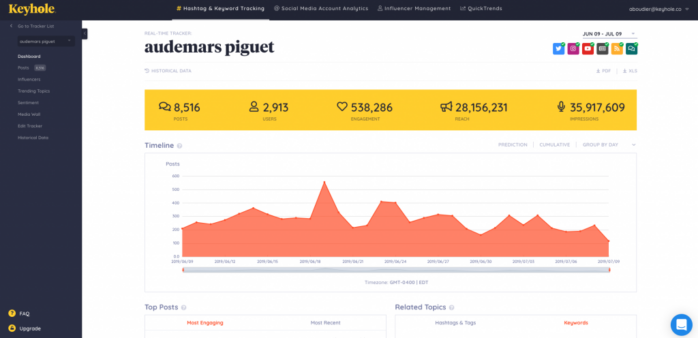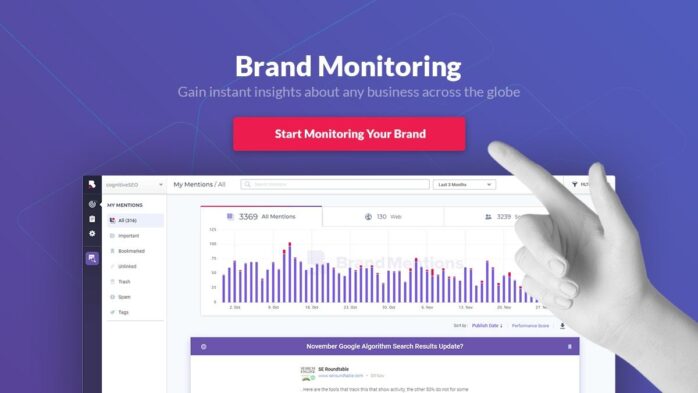
Understanding how your audience feels about your service or product is vital to any marketing strategy. Here’s where sentiment analysis comes into play.
It can significantly impact your brand through accurate interpretation of a customer’s sentiments, feelings, and interests. In other words, it’s the process of evaluating how your target audience feels about your brand and its product and services.
More importantly, this analysis can help you better grasp your customers’ expectations. With deeper knowledge comes a more effortless organisation and more suitable actions to secure the best customer engagement.

Sentiment Analysis: what is it and why do brands need it?
Sentiment essentially relates to feelings, emotions, attitudes, and opinions. It refers to the practice of applying Text Analysis techniques and Natural Language Processing to pinpoint and extract subjective data from a piece of text.
People’s feelings or opinions are mostly subjective, and that means accurately identifying and examining their mood or opinion from a piece of text can be quite difficult. With Sentiment Analysis from a text analytics point of view, you are essentially looking to get an interpretation of the emotional tone they deliver, whether they’re positive, negative, or neutral.
Lately, there has been a growing interest in this practice mainly because businesses are all eyes and ears about their customers’ opinions and needs. No longer do they need to rely massively on workshops, surveys, and focus groups to gain insight into their audiences’ sentiments. In today’s all-tech business environment, companies of all sizes and from a wealth of sectors are able to harness the power of AI and Machine Learning to extract meaning from texts to make more informed marketing decisions.
What Do You need?

Not long ago, you had to analyse millions of posts, comments, and survey reactions to even get started with sentiment analysis. But things have evolved, if not advanced, enough to have access to sentiment analysis tools that automate this process and provide your team with insights they need to achieve their marketing goals.
NLP Software
Natural language processing software enables brands to better understand, interpret and leverage human language. When it comes to sentiment analysis, these tools can seamlessly automate the process of gathering opinions about a specific subject. For instance, machine translation API tools from Pangeanic can effectively detect consumers’ opinions or feelings about a topic in any language and uncover actionable insights that would otherwise be unobtainable.
NPL software can determine a text’s positive and negative or neutral overtones and machine translation accuracy and speed of translation when dealing with multilingual User Generated Content (UGC) is essential. Its applications range from analysing audience feedback to detecting different types of market research through analysis of reviews, posts, and all kinds of reactions.
Keyhole

Keyhole is a software tool for businesses and organisations who collaborate with influencers, need to monitor campaigns on a daily basis, create online events and perform brand research. One of the most important features of Keyhole is sentiment analysis. The information appears on the Control panel of your hashtag and keyword tracker. This tool calculates sentiment score founded on negative and positive mentions: sentiment score = positive/ (positive + negative).
Keyhole enables marketers to filter by sentiment employing a five-point scale of emoji in the Posts tab. This also helps them in editing the level of sentiment if they consider it is necessary. For instance, Keyhole recognizes that it’s machine learning. A feature that places Keyhole on top of other sentiment analysis tools since it can detect cynicism and industry-specific sentiment with great precision.
Brand24
Brand24 helps brands monitor audience buzz on the most popular social media platforms, covering everything from social networks, blogs, news platforms, forums, newsletters, and podcasts. It offers real-time and robust media monitoring analysis of your markets’ sentiment.
Thanks to Brand25, you can easily identify which comments are favourable, unfavourable, or impartial. It offers a very detailed graph of your audience with spikes and dips that make it easy to understand the reasons for changes in sentiment.
BrandMentions

This tool has managed to index almost 1 billion brand citations on behalf of its 1,000 customers to date. The platform monitors every social media website, including different blogs, websites, review websites, and more.
Marketers rely on this tool partly to save, organise, and evaluate customer discussions, converting them into valuable data indicators they can leverage for continuing evaluation and business information.
BrandMentions features three pricing options, and you can get sentiment analysis integrated into every option. Each tier analyses mentions and lets experts understand whether the general tone is positive, negative, or neutral.
Talkwalker
This software monitors, ingest, and indexes massive amounts of data on daily basis from different socials and over 150 million blogs, forums, and websites, comprising 187 languages. Talkwalker helps marketers track sentiment in 92 languages, listen, and analyse.
The platform features sound brand data tools for a precise analysis of statistics related to engagement, mentions, and can scrutinise every data entry to unearth the comments or contents behind this information. Talkwalker displays a clear sentiment record, together with current negative versus positive sentiment.
Mention

Mention helps marketers monitor, analyse, manage socials, perform automated reports, and obtain personalized insights in a matter of minutes. In addition, Mention can help you avoid eventual negative feedback by identifying early traces of dissatisfaction before they grow into raging fires.
Though the analysis of sentiment feature isn’t provided in solo and lower-lever free plans, Mention does include it in the rest of the tiers. Mention will hunt down different statements from your competitors and brands across the web. It turns out this feature is Mention’s most sophisticated asset, along with the source, influence, and more.
The sentiment analysis feature helps you pinpoint unfavourable reviews about brands so you can fix them or answer them. On the other hand, you can employ sentiment analysis on socials like Facebook or Instagram to spot “nice-sayers,” thank them, share what they have to say, and share the message.
Ultimately, consumer sentiment analysis can completely transform your business reputation for the better by helping you get better insights into the issue with your service or products on a micro level and helping you settle them individually.






